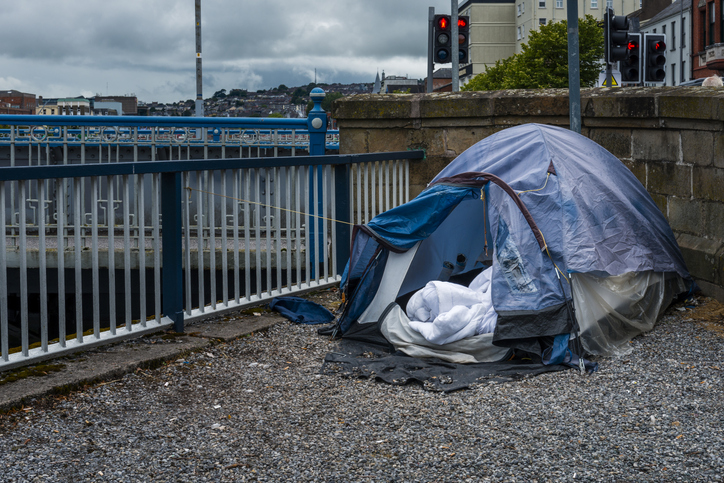
Pop-up housing shelters and smart homes with eye scanners are among the projects being considered by the City of Sydney to tackle an ongoing housing crisis.
The City of Sydney is looking into smart new ways of boosting affordable housing supply across the city after shortlisting a number of innovative ideas at its recent housing challenge.
From a cutting-edge housing model to affordable high-rises, a number of submissions were made to help council improve the affordability of housing and tackle homelessness after an Anglicare report early last month found most Australians on welfare can’t afford to live in capital cities.
The news last month sparked a call from the Lord Mayors of Australia’s two biggest cities for action by the government on housing affordability and homelessness.

Council last month opened the call up to the public, considering 230 submissions from Australia and across the globe as part of its annual housing challenge and this month announcing seven finalists.
Shortlisted applicants receive $20,000 to further develop their concept, which could then potentially help the city solve its housing woes.
Among the finalists is a cutting-edge new idea to create temporary, pop up shelters which repurpose buildings across the city to provide crisis and transitional accommodation.
The idea, which has already been floated in Melbourne, comes from founder and director of Housing All Australians Robert Pradolin, who for decades has been at the leading edge of housing solutions.
Mr Pradolin’s pop-up shelters would temporarily reuse vacant buildings which would be provided at minimal or no cost by the private sector and companies involved in the building industry, to ensure the shelter is both habitable and complies with building codes.
“This is not a long-term solution, but an immediate response by the private sector to a city in crisis. Housing for all, rich or poor, is a fundamental economic platform upon which we can build a successful and prosperous country,” he said.
The crisis accommodation would be provided in conjunction with a social service provider, who would manage the building once Housing All Australians has undertaken the relevant works.
Mr Pradolin says that while the solution is crucial to address the crisis, long-term solutions are essential.
“Our Pop Up Shelter concept is not a solution. It is a private sector response to a crisis. We need more affordable, social and public housing to be built,” he said.
The other six shortlisted entries are:
- An equity housing model that provides affordable housing through innovations in financing and ownership types from Eddie Ma, co-founder of Sydney-based spatial design practice, Vigilanti.
- A smart home that monitors its residents to collect data to offset costs for residents by Joe Colistra and Nilou Vakil in Kansas, principal architects with US firm, in situ Design and instructors at the University of Kansas. The technology reads resident’s eye movements to warn them if they’re getting sick and even to measure their sleep quality.
- A metropolitan lands trust policy framework from researcher Dr Louise Crabtree at Western Sydney University and Jason Twill of Urban Apostles.
- A Right Size Service which lets residents adapt the size and function of their property as their circumstances change from Dr Alysia Bennett, Monash University, Dr Dana Cuff, UCLA’s cityLAB and Monash University and Dr Damian Madigan, University of South Australia.
- The Pixel Project which would establish radically affordable, high amenity dwellings from Anita Panov and Andrew Scott at panovscott Architects and Alexander Symes of Alexander Symes Architect.
- A cooperative housing model adapting the Zurich ‘non-profit build-to-rent’ by associate director at MGS Architects Katherine Sundermann, urban strategist Alexis Kalagas and urban designer Andy Fergus.
The city is set to provide funding to develop the shortlisted ideas over the next give months, after which the public will be able to provide feedback.
Comment below to have your say on this story.
If you have a news story or tip-off, get in touch at editorial@governmentnews.com.au.
Sign up to the Government News newsletter.
In the past assistance re homing residents who found it impossible to purchase high priced homes were directed to lower cost residential parks. Regrettably many parks are being sold to American Companies who are charging very high site fees (resident owns home but has to pay rental for the small piece of land the home sits on. If increases continue in the current manner we will find more and more people homeless.
A bit more honesty by government politicians in handling housing matters would go a long way